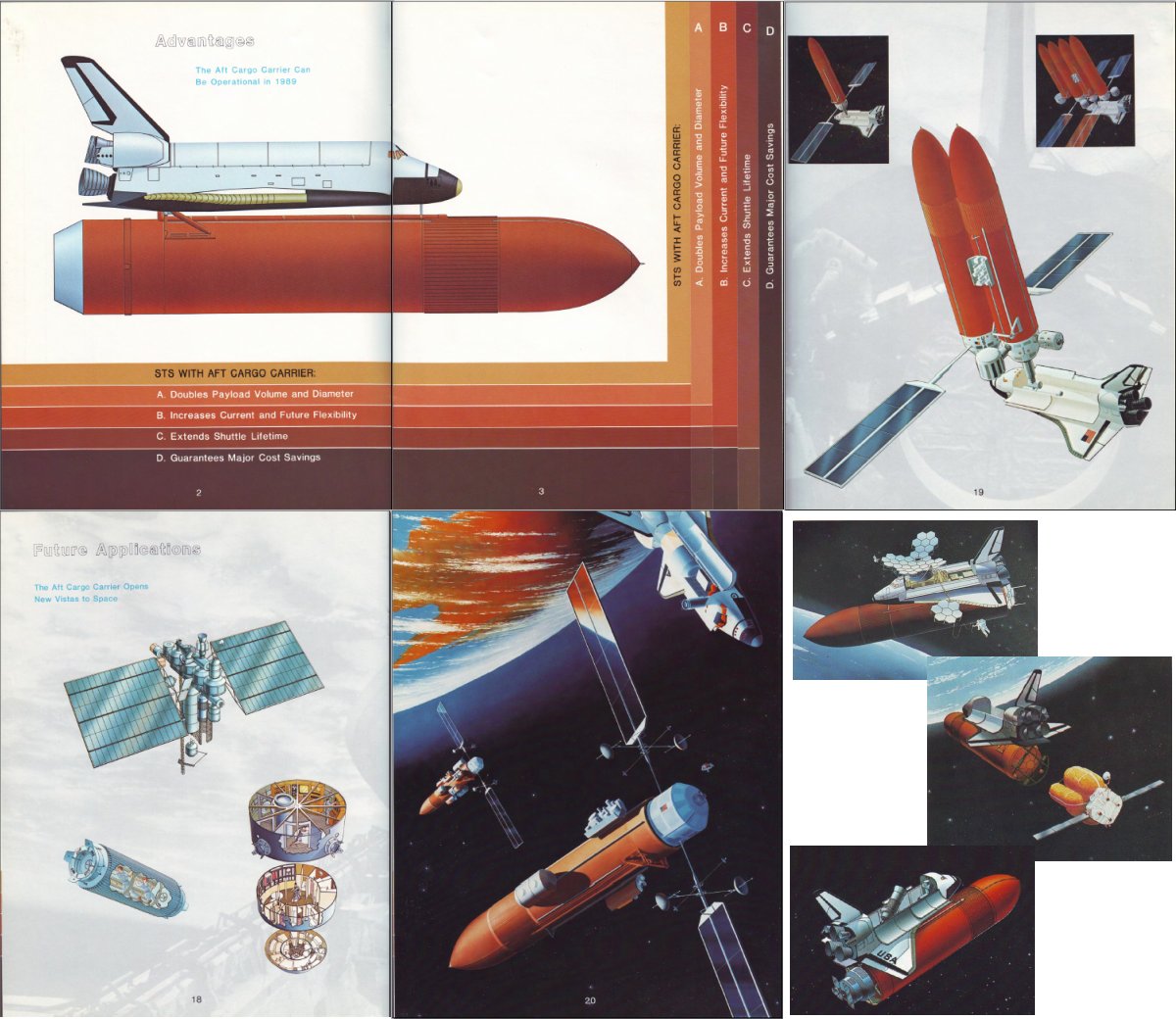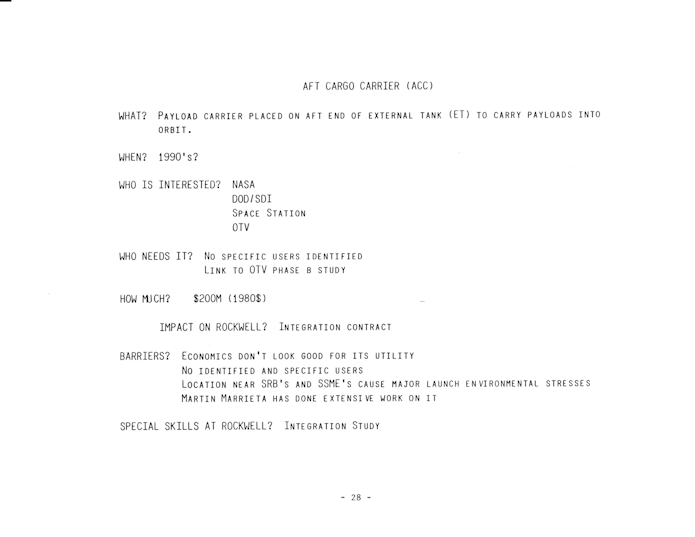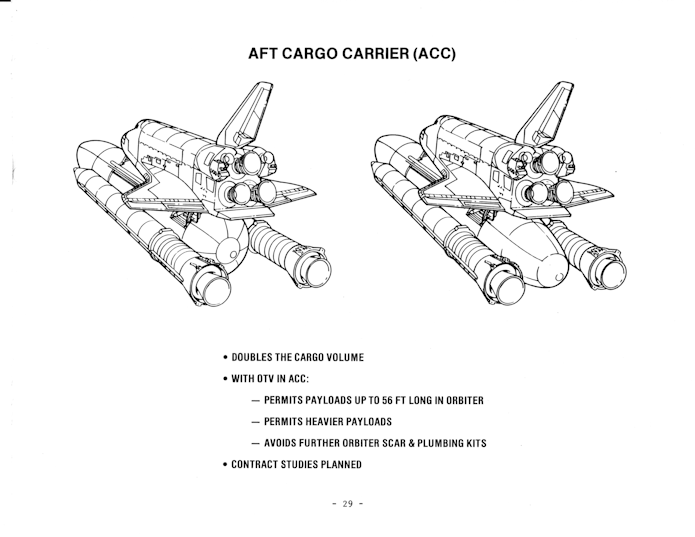Continuing…
In 1985 Rockwell pondered the business possibility of an “Aft Cargo Carrier” for the Shuttle. This idea, which received a fair amount of study by Martin Marietta, installed a payload shroud to the *rear* of the external tank. Doing this would allow the Shuttle to carry payloads too large in diameter to fit in the Shuttle bay; if the STS system was overall improved, this would allow the vehicle to carry payloads heavier than the Shuttle itself would be allowed to carry (the Orbiter has to *land* with whatever payload might be in the cargo bay; by moving the cargo away from the Orbiter, in an abort situation the orbit can land light and just let the aft payload go into the drink). The cargo carrier has to be insulated from a *lot* of heat, radiant energy coming from the solid and liquid rockets.
A common idea was that the Orbiter would carry some sort of satellite or other payload not capable of much self-propulsion, while an orbital tug would be carried in the ACC. The tug would be fueled with light & fluffy liquid hydrogen, which not only would be challenging to fit into the Orbiter cargo bay, it would also require new fuel line pass-throughs in either the cargo bay doors or the sides of the cargo bay… along with boiloff vents. Much preferable, went the argument, to put the LH2 in an ACC that you could poke whatever holes you want to in.
The configuration of the ACC shown in the sketch is noticeably different from all other ACC designs I’ve seen elsewhere. I don’t know if this is because Rockwell designed a rather ellipsoidal carrier, or the artist just sorta dashed this one out.
Next time: boosting the boosters
A Martin Marietta ACC brochure is “Space Document 58,” available on the Drawings & Documents catalog.


